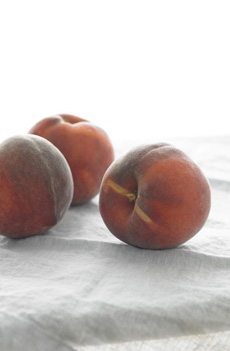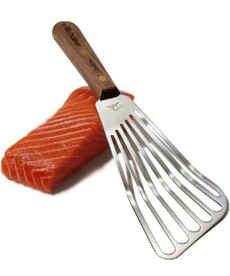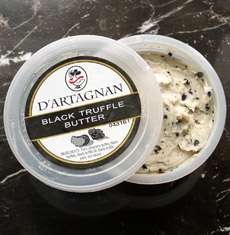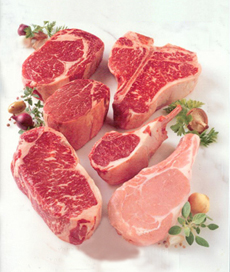|
Some sources say that about one-third of food worldwide is wasted. Fresh fruits and vegetables that go bad lead the list.
A report on FoodProductionDaily.com finds that the average American household throws out 14% of its food purchases: $590/year for a family of four, more than $43 billion/year combined.
Sodexo, one of the world’s largest foodservice companies, says that Americans throw out 25% of the food they prepare.
It‘s not just a waste of money, and a nagging guilt that we are throwing away what would mean so much to so many who lack enough to eat.
And food is not simply “biodegradable.” The decomposition of fruits and vegetables, for example, creates methane gas—a major factor in the depletion of the ozone layer, which creates climate change.
|
|

Don’t let it rot. Follow these tips. Photo
courtesy La Cuisine Du Marché. |
We are guilty of throwing out our fair share of food at home, as well as THE NIBBLE’s food supply:
Excited by favorable pricing, we buy more than we will realistically consume.
We realize the food needs to be eaten, but we’re not in the mood for it.
Food of all kinds gets pushed to the back of the fridge and we don’t find it until it’s too late.
Here’s how we’re attacking the problem:
Anything that’s perishable gets written on a list that we keep on the refrigerator door. We use one of those magnetized shopping list pads. There are also wipe-clean plastic versions.
Every Saturday morning before breakfast, we go through the list and the fridge, hauling out things that should be consumed without further delay. Then, we attack the list: For starters, we throw lots of ingredients into breakfast omelets.
Here’s our approach to “perishable food triage”:
Fruits
If fruit is past its peak, we freeze it (cut into chunks as appropriate). It can then be used for smoothies or “blender sorbet,” where overripe fruit is a benefit.
Or, poach the fruit in sweetened water or a water/fruit juice mix (you can add maple syrup or other flavorings). It will look more tempting as a fruit compote—alone, with a garnish of whipped cream or sour cream, with yogurt or ice cream or blended into a fruit soup. If it isn’t eaten over the weekend, freeze it.
Vegetables
If the broccoli, cauliflower, squash or whatever isn’t appealing as is, cook it and purée it as a side or a healthy snack. It’s delicious, and slides down with no resistance.
Make blender gazpacho.
Put all the veggies into a pot with salted water or a bouillon cube and make vegetable soup or stock. Reduce as desired. Eat (perhaps with some grated cheese) or freeze.
Dairy, Meat & Fish
If you have more milk than you want to drink, turn it into a more appealing beverage: chocolate milk or coffee milk, hot chocolate/iced hot chocolate, cappuccino, etc. We love hot milk with a packet of Splenda; you can add cinnamon or nutmeg, too.
Pop cottage cheese and yogurt into the freezer. (Yogurt can remain fresh well beyond its stamped expiration date. It will start to mold when it’s going bad.)
Apply the sniff test to cooked and raw proteins. If it doesn’t smell right, toss it without further ado. If it’s OK but you’re not going to consume it promptly, wrap it well and stick it in the freezer.
Next, keep a list of what’s in the freezer. When you’re nosing around the kitchen trying to decide what to prepare, look at the list!
If you end up with too much gazpacho—or if you’re not going to eat everything you’ve frozen—give them to friends and family. We’ll gladly take some soup/stock and frozen berries off your hands!
How do you deal with perishables at the edge? Share your tips.
|
|




